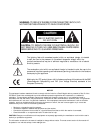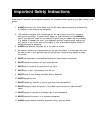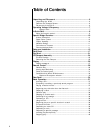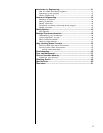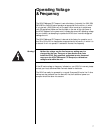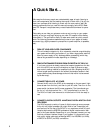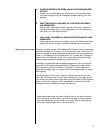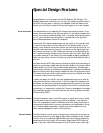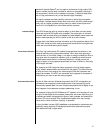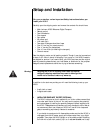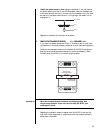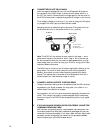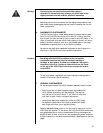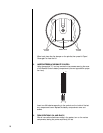
9
5 POWER UP THE REST OF THE SYSTEM, LEAVING THE POWER AMPLIFIERS
FOR LAST
Always turn the power amplifier(s) off first, and on last. This good habit
minimizes the opportunity for unexpected transients reaching your loud-
speakers.
6 SELECT THE INPUTS YOU ARE USING ON YOUR DIGITAL PROCESSOR
AND PREAMPLIFIER
Take care that a Tape Monitor switch does not override your selection of
the digital processor’s input on your preamplifier, or you will be struck by
how “quiet” your new digital source is.…
7 LOAD A DISC AND PRESS PLAY; SLOWLY RAISE THE VOLUME ON YOUR
PREAMPLIFIER
Congratulations! You should now be able to enjoy your favorite music while
reading the rest of this manual. (Please, do read the rest of this manual.)
Warm up/break-in period Although your Mark Levinson Nº31.5 Reference CD Transport delivers outstanding
performance straight out of the box, you should expect to hear it continue to im-
prove as it reaches its normal operating temperatures and its various components
“break-in.” For example, the pulse transformers* will not reach their ultimate per-
formance until they have been driven with an actual load (meaning the digital
output must be connected to something) for about 24 hours.
It has been our experience that the greatest changes occur within the first few
hours as the Nº31.5 reaches thermal equilibrium. Depending on how cold the
Nº31.5 was when you first connected it to AC power, full thermal equilibrium
might take as long as a day or two, after which time its performance will remain
quite constant.
The only exception to this rule is if power is removed from the unit for more
than a few minutes, allowing it to cool down. Depending on the degree of cool-
ing involved, you should expect a brief warm-up period before the Nº31.5’s sound
quality is at its best. Unless your Nº31.5 was allowed to become quite chilled,
subsequent thermal re-stabilization should not take long.
* Pulse transformers couple the internal digital circuitry to the actual connector
on the rear panel. The ones used in your Nº31.5 are costly and offer extraordi-
nary performance. Even so, they exhibit this modest “break in” period during
which they improve beyond their initial performance.




